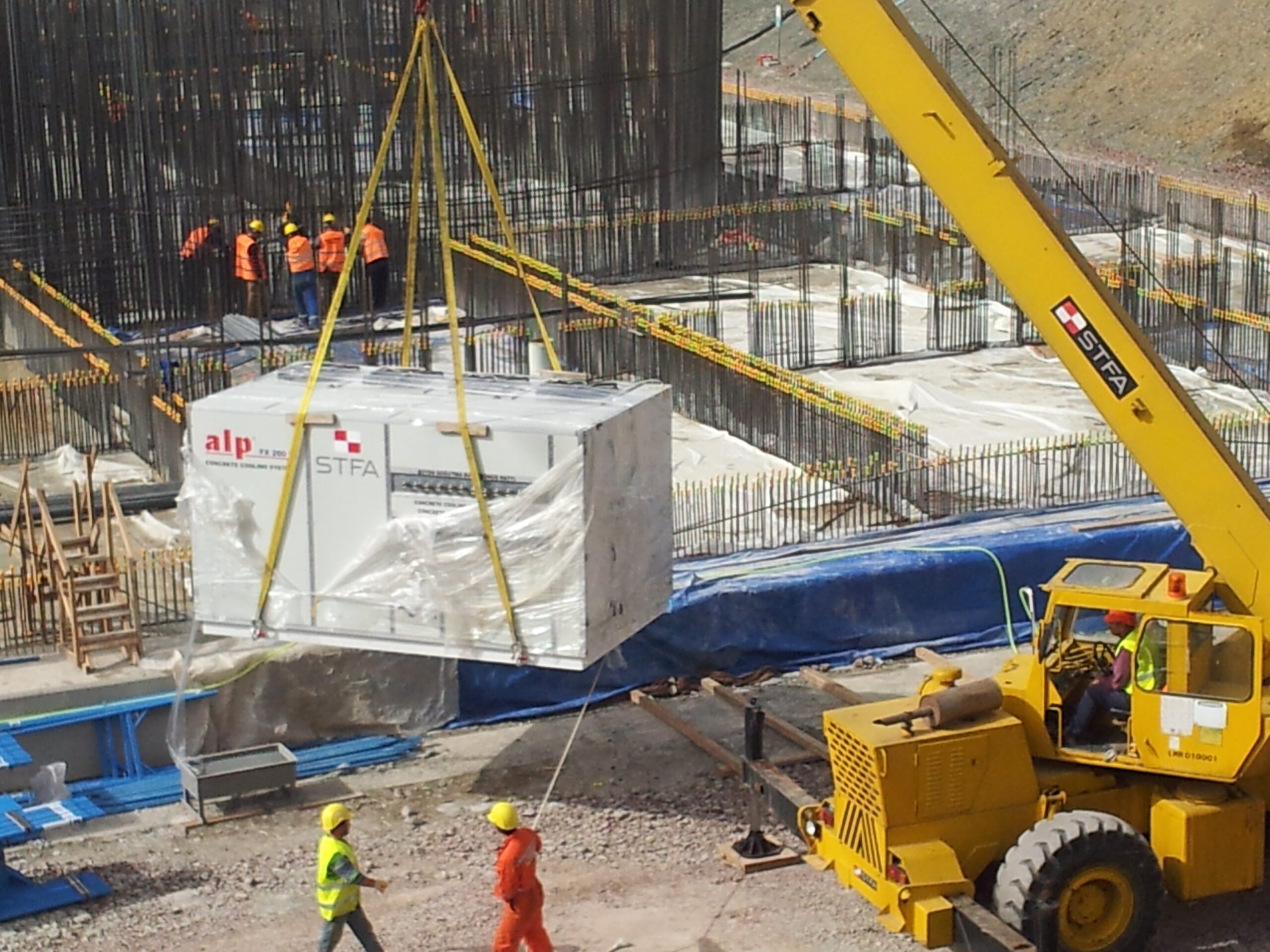
Applications and Energy Efficiency of Concrete Cooling Systems
Fundamental Necessity of Concrete Cooling
During the hydration process of concrete, a significant amount of heat is released inside the formwork. This is especially critical in large volume pours, hot climates, or concrete mixes with a high solid content, leading to thermal stresses and cracking risks within the concrete. These issues result in strength loss and structural problems. Therefore, in modern engineering, concrete cooling systems have become essential to ensure the quality and safety of the structure.
“Formwork Cooling System” by Alperen Engineering
The system developed by Alperen Engineering is based on directly cooling the concrete itself inside the formwork, not the mixing water. Polyethylene pipes are placed within the formwork; cold water circulates through these pipes to maintain the concrete temperature at normative levels.
https://alperen.com.tr/beton-sogutma-sistemleri
Key features of this system:
-
Packaged type, portable design suitable for construction sites
-
Fully automated system
-
Proportional capacity control compliant with ARI 550/590-98 standards
-
Industrial-grade technical infrastructure including horizontal semi-hermetic screw compressors, modular compressor circuits, IP65 rated panels, vibration-free fan assemblies
The system has been successfully applied in major projects such as Osman Gazi Bridge, Eurasia Tunnel, and Çanakkale Bridge, demonstrating exemplary performance with supply-return collector lines and automated control.
Application Areas
Concrete cooling systems offer significant advantages especially in the following areas:
-
Dam, bridge, and tunnel construction
-
Large industrial facilities, power plants
-
Airport runways and highway pavements
-
Concrete applications in hot climates
These systems minimize plastic shrinkage, setting irregularities, and cracking risk, guaranteeing quality.
Energy Efficiency Analysis
The choice of cooling method directly affects energy consumption:
-
Ice-fed systems: 12–20 kWh/ton energy consumption
-
Chilled water systems: 3–5 kWh/ton (more efficient)
-
Nitrogen injection: 20–30 kWh/ton (high cost)
-
Aggregate cooling: 2–4 kWh/ton (most energy efficient)
The formwork cooling method developed by Alperen Engineering stands out as the most energy-efficient alternative.
Moreover, applications such as supply-return water temperature measurement, automatic flow control, and remote monitoring increase energy efficiency.
Energy Recovery and Use of Renewable Sources
Waste heat can be reused in auxiliary processes such as aggregate drying or site heating. Additionally, combining with solar energy or cogeneration systems reduces carbon emissions while saving energy costs. There are opportunities for renewable integration in this field.
System Design: Engineering Approach
Factors to consider for the proper design of concrete cooling systems include:
-
Concrete volume, temperature, and pouring process
-
Environmental temperature and climate data
-
Target concrete temperature (typically ≤ 26–28 °C)
-
Energy cost and cooling infrastructure
-
Automated control and monitoring infrastructure
The Alperen system is designed modularly, automated, and suitable for site conditions to meet these parameters.
Durability, Portability, and Operational Ease
The system includes:
-
IP65 protected, electrostatically painted modular cabinet
-
Crane lifting ears, chassis system for easy transportation
-
Redundant pumps and independent compressor circuits
-
Easy service access and 2-year warranty
These technical details provide high durability and ease of maintenance in site environments.
Comprehensive and Efficient Solution
Alperen Engineering’s concrete cooling system addresses the cooling inadequacies encountered with classical methods by modern engineering solutions. Formwork cooling, full automation, energy-efficient water cooling, remote monitoring, and site-friendly design make this system ideal for large projects.
Alperen Engineering’s patented formwork concrete cooling system stands out as a remarkable solution for large-volume industrial concrete applications thanks to:
-
Effectively minimizing thermal stresses
-
Optimizing energy efficiency at the highest level
-
Innovative engineering approach perfectly adapted to local climate and site conditions
İlker KURAN
Alperen Engineering Ltd. Co.







